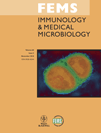Rapid effector function of circulating CD4+ T cells specific for immunodominant regions of the conserved serine/threonine kinase found in Streptococcus pneumoniae (StkP) in healthy adults
Editor: Willem van Eden
Abstract
Streptococcus pneumoniae is an encapsulated bacterium that causes significant global morbidity and mortality. There is emerging evidence that T cells contribute to the immunity that protects humans from S. pneumoniae-associated disease. However, no T-cell epitopes have been identified as yet in this bacterium and there are no data that address the functional nature of T cells specific for pneumococcal-derived epitopes. We sought to define T-cell epitopes in the conserved serine/threonine kinase, found in S. pneumoniae (StkP) and to investigate specific interferon γ (IFN-γ) production resulting from such T-cell activation in healthy donors. We were able to detect the activation of T cells in response to pneumococcal whole-cell antigen or StkP-derived peptides in all 15 individuals. We found that the majority of the T-cell responses were directed against the extracellular, penicillin-binding protein and serine/threonine kinase-associated domains. We proceeded to characterize the immunodominant epitope in detail and observed HLA-DRB1*1501 restriction. This is the first study that has identified T-cell responses to peptides derived from a protein from S. pneumoniae and has shown that in healthy adults, specific T cells have rapid IFN-γ production compatible with effector cell differentiation. The use of such T-cell epitopes will aid in the future monitoring of T-cell responses to both S. pneumoniae infection and vaccination in humans.




